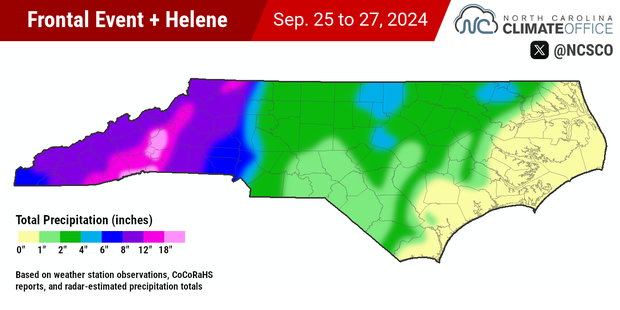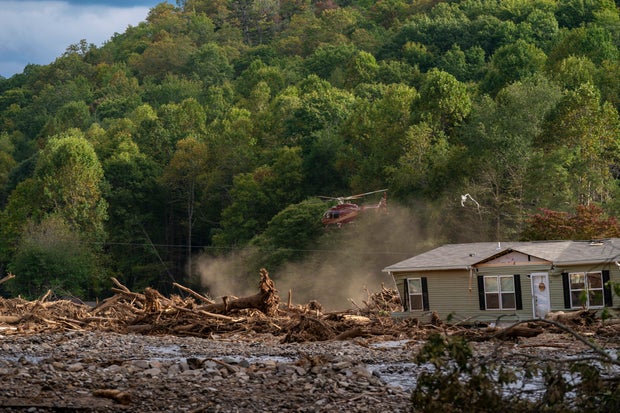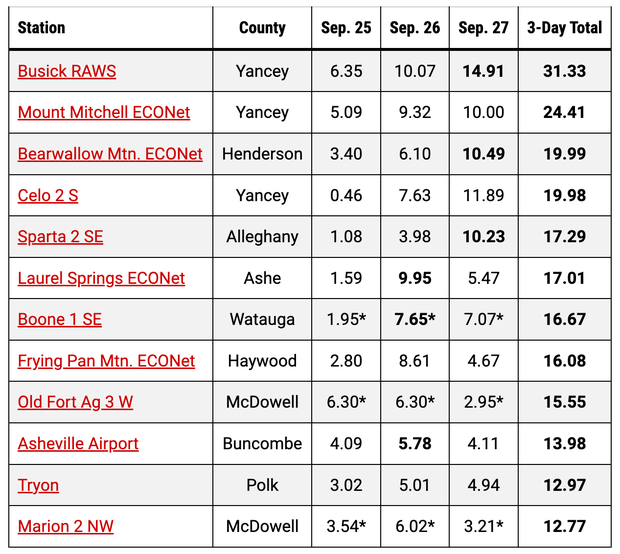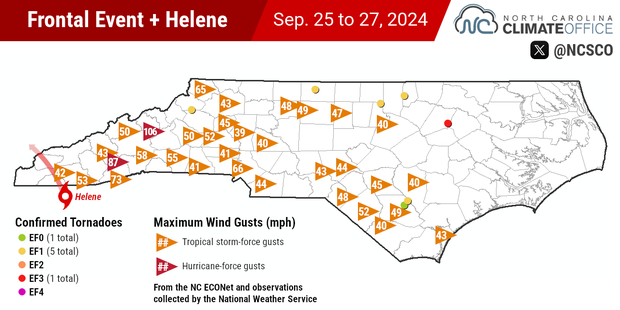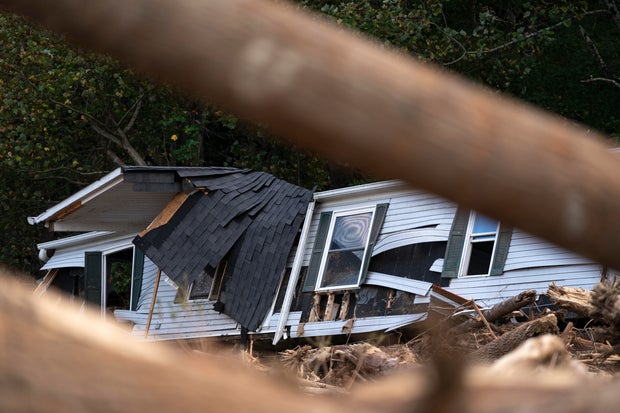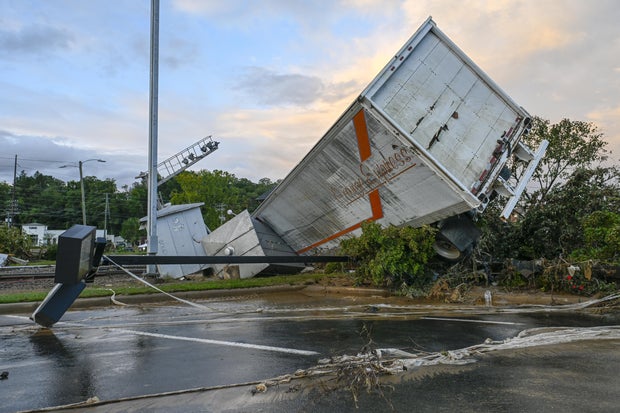CBS News
Both Harris and Trump talk about the cost of insulin, but advocates say a law Walz signed does more

In June 2019, Lija Greenseid handed Minnesota Gov. Tim Walz an empty vial of insulin that her 13-year-old daughter had painted gold.
Greenseid’s daughter has Type 1 diabetes, which means she requires daily injections of manufactured insulin to stay alive. The price of a single vial of insulin rose by about 1,200% between 1996 and 2018, and the gold vial was a reminder, Greenseid said, that this lifesaving pharmaceutical shouldn’t be as expensive as precious metal.
“What I heard is that that gold vial remained on his desk at the governor’s office, and he brought it up throughout that summer and fall when he was trying to talk to legislators to get them moving,” Greenseid said.
Ten months later, in April 2020, Walz signed the Alec Smith Insulin Affordability Act. The law was named after the 26-year-old Minnesotan whose 2017 death from rationing insulin became a catalyst for the patient advocates who turned the high cost of insulin in the U.S. into a national political priority.
Now it’s an issue in the presidential campaign. Both former President Donald Trump and Vice President Kamala Harris and her running mate, Walz, have sought to appeal to the nation’s 8.4 million insulin users and their families by touting policies that make insulin cheaper for some patients.
But advocates for diabetes patients fret that neither presidential candidate would go as far as Walz’s Minnesota law, which helps patients even if they are uninsured, despite the law being under legal attack by the drug industry.
The landscape on insulin pricing has already changed significantly in the past five years. One month after Walz signed the Minnesota law, the Trump administration announced a voluntary program for Medicare prescription drug plans to cap copayments for some insulin products at $35. Two years later, President Joe Biden signed a law requiring all Medicare drug plans to cap copayments for insulin at $35 a month.
Now, amid the current presidential campaign, Harris has proposed extending that $35 cap on insulin copayments to Americans with commercial health insurance.
The Trump campaign’s national press secretary, Karoline Leavitt, touted his efforts on prescription drug prices when he was in the White House, including approval of a pathway for prescription drugs to be imported from Canada as well as the voluntary $35 insulin Medicare copayment cap. But she did not offer new insulin-specific initiatives for his possible second stint as president.
“President Trump will finish what he started in his first term,” Leavitt wrote in a statement.
Copayment caps, which have been enacted by 25 states, are popular policies because they provide an immediate financial benefit that many patients see at the pharmacy, according to University of Southern California economist Neeraj Sood. They’re also relatively easy to implement.
But copayment caps don’t address the high list price of insulin itself, so uninsured patients don’t benefit from such rules. About 1 in 12 Americans lacked health insurance last year.
That’s what makes Minnesota’s insulin safety net different. The system has two parts: an emergency program that allows individuals to get a one-time, 30-day supply of insulin for $35, and a continuing need program that provides insulin to eligible patients for a year at no more than $50 for a 90-day supply.
By contrast, list prices for a 30-day supply of insulin can easily top $215, depending on the insulin.
The bill that created Minnesota’s program was bipartisan out of necessity. Republicans controlled the state Senate at the time, while the Minnesota Democratic-Farmer-Labor Party held the House and governor’s office.
Nicole Smith-Holt, whose son the bill was named after, watched in tears as it finally passed the state legislature in 2020.
“I was happy. I was relieved,” Smith-Holt said. “I was sad that it took Alec dying to get to the point where people could walk into the pharmacy and pick up their prescription for an affordable price.”
But because Minnesota’s program requires insulin manufacturers to provide the insulin, it has prompted a backlash from manufacturers. Pharmaceutical industry lobbying group PhRMA filed a lawsuit in 2020 to block the Minnesota law, arguing it violates the “takings clause” of the U.S. Constitution, which says private property can’t be taken for public use “without just compensation.”
That suit is ongoing, yet the state program is up and running and by the end of 2023 it had been used over 1,500 times.
PhRMA spokesperson Reid Porter said his group is committed to helping patients afford medicines. Insulin makers voluntarily dropped list prices last year and now offer patient assistance programs for affording the drugs. And the CEO of insulin maker Eli Lilly first proposed the voluntary Medicare copay cap Trump announced in 2020.
Porter said insulin costs have been driven up by insurance companies and pharmacy benefit managers, also known as PBMs — the middlemen between insurance plans or employers and drug manufacturers — when they pocket the discounts from the list price of drugs that they negotiate with manufacturers.
“Minnesota’s insulin program does not solve this problem and is unconstitutional,” Porter said. “This is not how the system should work, and why it’s critical that policymakers should prioritize reforming the PBM system, a solution that puts patient health over politics.”
In 2021, Sood co-authored a study that found that, despite insulin list prices rising between 2014 and 2018, income received by drugmakers decreased while increasing for intermediaries like PBMs and pharmacies.
In September, the Federal Trade Commission announced a lawsuit against the nation’s three biggest PBMs, alleging they created a system that inflated insulin prices. The companies denied the claims.
Jing Luo, a physician at the University of Pittsburgh, said that regardless of who wins in November he doesn’t expect existing insulin policies like Medicare’s popular copay cap to be rolled back, due in part to the advocacy of people like Smith-Holt and Greenseid.
“They’ve been really effective at tying high insulin prices with really bad, morally repugnant outcomes,” Luo said.
The key in Minnesota was including real stories, Greenseid said.
“We had enough real people who reached out and had conversations and helped to show politicians the extent of the problem,” Greenseid said, “and they listened.”
KFF Health News is a national newsroom that produces in-depth journalism about health issues and is one of the core operating programs at KFF — the independent source for health policy research, polling and journalism.
CBS News
Here’s how Hurricane Helene brought “biblical devastation” to western North Carolina in a near “worst-case scenario”

Hurricane Helene has proved to be disastrous for Appalachia, as massive amounts of precipitation from the storm caused rampant flooding that has devastated several towns and killed dozens of people. On Monday, the North Carolina State Climate Office provided a picture of how the “monster storm” was nearly a “worst-case scenario for western North Carolina.”
“Torrential rainfall from the remnants of Hurricane Helene capped off three days of extreme, unrelenting precipitation, which left catastrophic flooding and unimaginable damage in our Mountains and southern Foothills,” a post from the office says. “… the full extent of this event will take years to document – not to mention, to recover from.”
Here’s how the climatologists said it happened.
North Carolina was saturated with rain before Helene hit
North Carolina State Climate Office
As Helene became a Category 1 hurricane in the Gulf of Mexico — more than 500 miles and 30 hours away from where it would eventually make landfall in Florida — western North Carolina was already seeing rain. The climate office says that Helene’s outskirts were feeding tropical moisture to slow-moving storms that had formed along a stalled cold front.
By midnight on Thursday — roughly an hour after Helene’s landfall 10 miles north of Steinhatchee, Florida — Asheville Airport in North Carolina had already seen more than 4 inches of rain. That downpour continued before Helene’s outerbands even moved in. By Thursday night, Yancey County, which sits just south of Erwin, Tennessee, where floodwaters became so bad that people were trapped on the roof of a hospital, had seen more than 9 inches of rain.
/ Getty Images
Water was already beginning to inundate cities, “all while the heaviest rain from Helene was just beginning to fall,” the climate office said. The more than 300 miles of tropical storm-force winds Helene produced only amplified the situation, pushing more moisture up mountains.
“The storm’s impacts were especially long-lasting because of its massive size. It developed in a high-humidity environment over the warm Gulf of Mexico, which let it grow and strengthen unimpeded,” the office said. “…From the start of the precursor frontal showers on Wednesday evening to the heart of Helene moving through on Friday morning, it was one of the most incredible and impactful weather events our state has ever seen.”
Record rain brings reports of “biblical devastation”
From Wednesday to Friday, the office said that there were more than 8 inches of rain across the western North Carolina mountains, with some areas seeing a foot or more. The highest rainfall total was in Busick, with a three-day total of 31.33 inches — more than 2.5 feet.
At least a dozen weather stations recorded their wettest three-day periods on record, the office said. Asheville Regional Airport lost communications on Friday morning after Helene’s landfall, but had already reported just under 14 inches of rain. That amount, the office said, was “nearly three months’ worth of precipitation … in less than three days.”
North Carolina State Climate Office
All of that rain caused rivers to flood, landslides and mudslides, leading to rescues across several counties.
In Buncombe County, home to Asheville, Emergency Services Assistant Director Ryan Cole told the Citizen-Times that “catastrophic devastation” didn’t accurately describe the impact the deluge had.
“It would go a little bit further and say we have biblical devastation through the county,” Cole said. “We’ve had biblical flooding here and it has been extremely significant.”
The newspaper quoted county manager Avril Pinder as saying, “this is looking to be Buncombe County’s own Hurricane Katrina.”
Rare mountain tornado as Helene’s winds move in
North Carolina State Climate Office
“Helene brought the full suite of hurricane impacts to North Carolina,” the climate office said, “and in full force just hours after its landfall at Category-4 strength.”
The winds from Helene were felt across western North Carolina, with the Charlotte Airport recording the strongest wind gusts it’s seen since a thunderstorm microburst in August 2019. The winds, which surpassed hurricane speeds in some places, contributed to widespread power outages. Millions were left without power across several states because of Helene, and as of Tuesday morning, hundreds of thousands remain without electricity in North Carolina alone.
/ Getty Images
On Wednesday evening, as the state battled existing storms ahead of Helene, a rare mountain tornado formed in Watauga County, the first it had seen since 1998. The day after Helene made landfall, at least six tornadoes were confirmed, including an EF3 in Rocky Mount that destroyed several buildings.
A historic and deadly storm
CBS News has confirmed that at least 131 people across several states were killed by Helene. Buncombe County alone has reported at least 40 deaths, including a 7-year-old who was swept away by floodwaters with his grandparents.
While hundreds of people were able to be rescued, there have been even more requests for welfare checks. And given the severity of the damage, the climate office said that suggests “the death toll is likely to climb as hard-hit areas are finally accessed in the coming days.”
“Sadly, our state’s long-running benchmark for deaths during a tropical event – approximately 80 during the mountain region’s July 1916 flood – could be in jeopardy from this storm that has already broken plenty of other records,” the climate office said, adding that the 1916 event was the area’s flood of record for more than a century — a title that “now belongs to Helene instead.”
Several rivers surpassed their highest-ever crests by several feet, including the Swannanoa River, which saw “the worst flood along the river since North Carolina became a state,” the office said.
Peter Zay/Anadolu via Getty Images
As unprecedented as Helene’s impact on the region was, there is a chance it won’t be the last.
“The rapid intensification of Helene over the Gulf, the amount of moisture available in its surrounding environment, and its manifestation as locally heavy – and in some cases, historically unheard of – rainfall amounts are all known side effects of a warmer atmosphere,” the office said.
Last year was already the warmest humans had ever recorded and 2024 has seen countless heat records. The continued use of fossil fuels releases greenhouse gases that are trapping heat within the atmosphere, increasing average temperatures that fuel extreme weather events like Helene.
It’s unclear when an event like Helene would downpour on Appalachia again, but the climate office is near-certain about one thing: “We won’t see another Helene in the Atlantic.”
Officials often retire hurricane names when they are particularly devastating, and while such action has yet to be announced, the climatologists suggest it may only be a matter of time.
CBS News
Thousands of port workers go on strike, shutting down East and Gulf Coast ports

Watch CBS News
Be the first to know
Get browser notifications for breaking news, live events, and exclusive reporting.
CBS News
GOP Rep. Elise Stefanik on VP debate

Watch CBS News
Be the first to know
Get browser notifications for breaking news, live events, and exclusive reporting.







